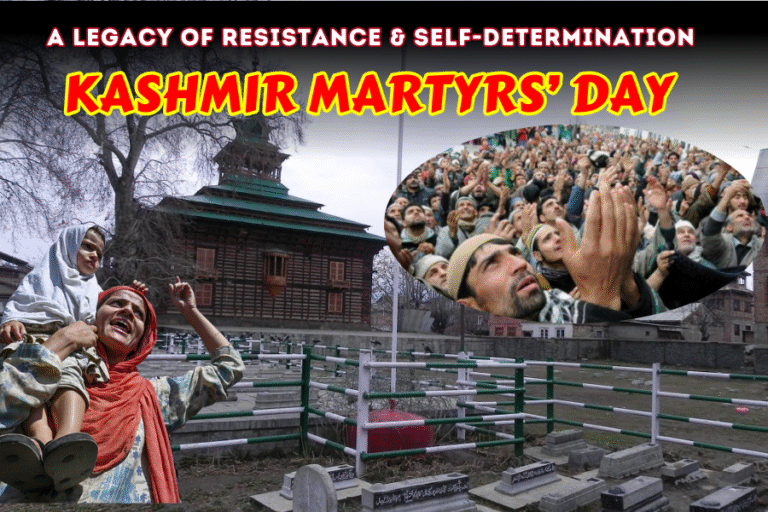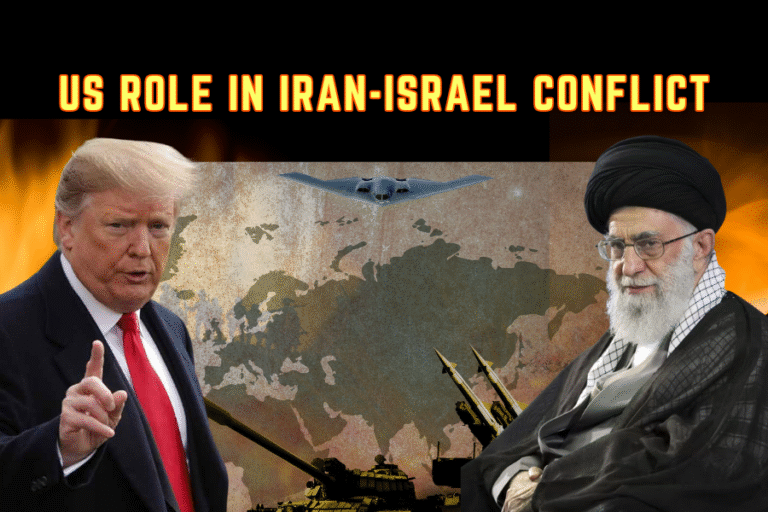(By Khalid Masood)
In an era where regional conflicts can rapidly escalate into global crises, the 2025 Iran-Israel conflict stands out as a stark reminder of modern warfare’s evolving nature. The brief but intense clash—marked by missile barrages, drone strikes, and covert operations—has fundamentally reshaped strategic thinking within military and diplomatic circles. Triggered by escalating tensions and culminating in US air strikes on Iranian nuclear facilities in June 2025, the conflict concluded with a ceasefire mediated by regional powers, as both sides demonstrated effective escalation control. This war underscores the growing importance of missile and drone technologies, the necessity of clear nuclear policies, and the critical need for robust counterintelligence. It also exposes vulnerabilities in AD (air defence) and logistics, offering vital lessons for countries like Pakistan that face larger regional adversaries such as India.
I. The Nuclear Imperative: Hardening Assets and Policy Clarity
The Iran-Israel conflict underscores a seismic shift in global nuclear dynamics, with profound implications for Pakistan. US’s air strikes on Iran’s nuclear sites, such as Fordow, Natanz and Arak signal that nuclear facilities are no longer sacrosanct in conventional conflicts. While Iran’s deeply buried Fordow facility withstood attacks, its above-ground infrastructure suffered partial damage, as reported by Reuters. This validates Pakistan’s need to harden its nuclear assets, as India’s Doval Doctrine explicitly targets Pakistan’s vulnerabilities, evidenced by the 2016 arrest of Kulbhushan Jadhav for sabotage in Balochistan.
Iran’s nuclear knowledge base, built over decades, proved impervious to Israel’s assassination of scientists like Mohsen Fakhrizadeh in 2020, exposing the futility of such tactics. Pakistan, with its established nuclear arsenal, must prioritise asset hardening, drawing on Fordow’s model of underground fortifications. The May 2025 Indo-Pakistani clashes, where Pakistan downed more than half a dozen IAF fighter jets including four Indian Rafale, highlight the need for resilient missile and nuclear sites to deter India’s aggressive posturing.
Equally critical is nuclear policy clarity. Iran’s ambiguous stance fuelled escalation, while Pakistan must articulate a clear doctrine to counter India’s belief in “limited punitive conflict” under the nuclear overhang, as articulated by former Indian Army chief General Bipin Rawat. A robust policy, publicising Pakistan’s second-strike capability, would deter India’s miscalculations, as seen in its failed Operation Sindoor. China and Russia, wary of the US precedent, are likely to reinforce their own nuclear postures, urging Pakistan to align with SCO partners for strategic stability.
II. Escalation Control: A Lesson in Restraint
Both Iran and Israel demonstrated escalation control, limiting strikes to military targets and agreeing to a ceasefire when neither could achieve decisive gains. Iran’s 40-minute missile barrage on 10 April 2025, using Fattah-1 hypersonic missiles, re-established conventional deterrence, as reported by Al Jazeera. Israel’s response, constrained by logistics, avoided civilian targets, preserving a path to de-escalation. For Pakistan, this mirrors the May 2025 clash, where Pakistan’s measured retaliation—downing Indian jets without escalating to civilian strikes—forced a US-mediated ceasefire.
Pakistan’s restraint, backed by China and Russia, exposed India’s diplomatic isolation, as the G7 and QUAD refused to endorse its Pahalgam accusations. This validates Pakistan’s strategy of controlled escalation, using its J-10C & JF-17 jets and PL-15E missiles to deter aggression while avoiding all-out war. However, Pakistan must codify this approach, ensuring clear red lines to prevent India from exploiting escalation gaps, as seen in its reckless Operation Sindoor.
III. The Rise of Drones and Missiles: A New Warfare Paradigm
The conflict validated the efficacy of drone and missile technologies for weaker states. Iran’s use of Shahed-136 drones and Kheibar Shekan missiles overwhelmed Israel’s ADs, penetrating Arrow and David’s Sling systems, as per The New York Times. The socio-psychological impact, amplified by social media footage disrupted Israeli morale, with posts showing civilian panic. Pakistan’s own success in May 2025, using Bayraktar TB2 drones and JF-17C jets, mirrors this, destroyed Indian S400 AD and damaging numerous IAF bases.
For Pakistan, investment in drone swarms, hypersonic missiles, and electronic warfare is critical. India’s reliance on costly platforms like the S-400, which failed to intercept Pakistani strikes, underscores the advantage of cost-effective systems. Pakistan’s collaboration with China and Turkey, supplying J-10Cs armed with PL-15 and Bayraktar drones, must expand to counter India’s numerical superiority. The Iran-Israel conflict’s shift away from ground battles, due to geographical distance, highlights the diminishing role of infantry in such scenarios. However, Pakistan’s proximity to India necessitates a dual “Continental Strategy,” balancing conventional ground forces with advanced air and missile capabilities.
IV. AD and Logistics: Israel’s Achilles’ Heel
Israel’s AD systems, despite their sophistication, faced munition shortfalls, allowing Iran’s missiles to penetrate, as reported by Breaking Defense. The Israeli Air Forces’ 3,000-km roundtrip to Iran required multiple mid-air refuellings by a limited KC-707 fleet, curtailing strike capacity. The absence of bunker-busting munitions and long-range bombers forced reliance on US support, exposing logistical constraints. Pakistan must heed this lesson, as India’s IAF, with planned 42 squadrons of multi-role fighters, poses a similar long-range threat. Pakistan’s Saab 2000 AWACS and HQ-9B AD systems, used effectively in May 2025, require continuous upgrades to counter India’s air superiority ambitions.
Pakistan’s smaller air force, with 134 JF-17s and 25 J-10Cs, must prioritise munitions stockpiling and local production, leveraging China’s expertise. The Iran-Israel conflict’s reliance on air and missile warfare underscores the need for Pakistan to invest in layered AD, integrating HQ-9B with SHORAD systems like the FM-90. Logistical resilience, including secure supply chains, is equally vital to sustain operations against India’s larger resources.
V. Counterintelligence: Israel’s Covert Edge
Israel’s success in manipulating Iran’s assets—through Mossad’s infiltration, commando raids, and cyber operations like the 2024 pager explosions—underscored the importance of counterintelligence. Mossad’s recruitment of moles and use of malware disrupted Iran’s command chains, as reported by Haaretz. For Pakistan, this is a stark warning. India’s R&AW, under the Doval Doctrine, has a history of subversion, from Jadhav’s sabotage to alleged BLA support.
Pakistan must bolster counter intelligence units, enhancing human intelligence and cyber countermeasures. The 2025 clashes exposed India’s attempts to infiltrate Pakistani networks alleging R&AW agents in Balochistan. Strengthening counterintelligence, including vetting and encryption, is non-negotiable to protect Pakistan’s nuclear and missile assets.
VI. Leadership Resolve: The Decisive Factor
Iran’s refusal to capitulate, despite US and Israeli strikes, and Prime Minister Benjamin Netanyahu’s defiance of global pressure, highlight the centrality of leadership resolve. Iran leveraged its geography—3,000 km from Israel—and drone swarms to exhaust Israeli AD, as noted by Foreign Policy. Pakistan’s leadership, mirrored this resolve, uniting the nation with 96% public support, per Gallup Pakistan.
Pakistan must maintain this unity, countering India’s disinformation, as seen in its denial of Rafale losses until gallantry awards exposed the truth. Pakistan’s call for a neutral Pahalgam probe, backed by China and Russia, strengthened Pakistan’s global standing, a model for future crises.
VII. Implications for Pakistan: A Dual Strategy
The Iran-Israel conflict offers Pakistan critical lessons:
- Nuclear Hardening: Emulate Fordow’s fortifications to protect nuclear sites from Indian strikes, ensuring second-strike capability.
- Policy Clarity: Announce a clear nuclear doctrine to deter India’s limited war ambitions, aligning with SCO partners.
- Drone and Missile Investment: Expand Bayraktar and Shahed-style systems, leveraging China’s expertise.
- AD Upgrades: Integrate HQ-9B with indigenous systems, stockpiling munitions to counter India’s IAF. Acquire HQ-19B AD System from China at priority.
- Counterintelligence: Strengthen own intelligence outfits to thwart R&AW’s infiltration, as seen in Jadhav’s case.
- Leadership Resolve: Maintain national unity, countering India’s propaganda with transparent diplomacy.
VIII. Conclusion: Pakistan’s Path Forward
The 2025 Iran-Israel conflict is a clarion call for Pakistan to fortify its military and diplomatic posture. Iran’s resilience and Israel’s logistical limits expose the evolving nature of warfare, where drones, missiles, and counterintelligence reign supreme. Pakistan’s success in May 2025, downing Indian jets, pulverizing IAF and military targets and securing global support, validates its potential to lead in this new paradigm. By hardening assets, clarifying its nuclear stance, and investing in niche capabilities, Pakistan can deter India’s aggression while advancing initiatives like the South Asia-China Alliance (SACA) to sideline New Delhi. As South Asia navigates a turbulent future, Pakistan’s resolve and strategic clarity will ensure it stands tall, a beacon of strength against India’s hubris.







